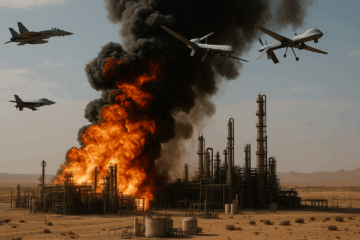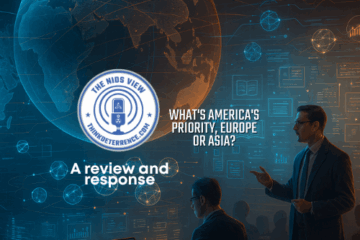On November 2, 2023, Russian President Vladimir Putin signed a Russian Federal Assembly bill formally withdrawing Russia’s 2000 ratification of the Comprehensive Nuclear Test Ban Treaty (CTBT). This means now none of the three largest nuclear weapon powers are fully part of the treaty, although all three have signed and claim to observe the ban on nuclear testing. This begs the question: does it really matter?
First, the text of the treaty makes ratification by certain states listed in Annex II of the treaty a requirement for its entry into force (EIF). These of course include the P5 states: China, France, Russia, United Kingdom (UK), and the United States (France and the UK have ratified). It also includes hard cases such as Iran and Israel. Worse, almost surely fatally, Annex II lists three nuclear-armed non-signatories: India, North Korea, and Pakistan. Consequently, ratification by Russia, China, and the US would be a good show, but effectively has no effect on the treaty’s entry into force.
Second, the treaty aims to prevent “any nuclear weapon test explosion or any other nuclear explosion.” The problem with this objective is that it is impossible to verify. Some advocates of the treaty believe that the Comprehensive Test Ban Treaty Organization (CTBTO) can detect any test, even the lowest yield. This belief is objectively untrue. What is objectively true is that absent the up-close emplacement of unacceptably intrusive measurement devices, nuclear weapon designers—backed by computer codes validated against a range of treaty-compliant and pre-treaty full-scale tests—can perform non-compliant nuclear tests that are undetectable by the CTBTO—and yet potentially yield useful data for them.
It remains a matter of subjective judgment when it comes to deciding if those undetectable tests, which might, with effective masking or decoupling techniques, lie in the range of tens of tons of explosive yield, could result in a significantly different nuclear capability. Working at a nuclear design laboratory, this author has discussed with senior nuclear designers whether, in the absence of nuclear testing, the United States has the tools and capabilities to design and field any needed nuclear weapon. Many designers believe the United States does not have to test, but computer modeling is only valid within certain weight, volume, and performance constraints. It is only with nuclear testing that you can understand elements outside those restraints.
Keep in mind, the CTBT has two goals: (1) prevent the development of new capabilities and (2) diminish confidence, over time, in the weapons in national stockpiles. The latter goal is more difficult to assess getting us into the realm of unknown unknowns.
Paul Robinson, former Director of Sandia National Laboratories, was guarded in his qualified support of the CTBT when testifying before the Senate Armed Services Committee in 1999. Prior to the Senate ratification, recognizing the difference between a treaty banning all nuclear tests and one that effectively only bans internationally detectable nuclear tests, he warned, “If the United States scrupulously restricts itself to zero yield while other nations may conduct experiments up to the threshold of international detectability, we will be at an intolerable disadvantage. I would advise against accepting limitations that permit such asymmetry.” That is a defensible argument and an argument that hinges on the indefinite extent of the treaty.
The bad news is that whatever the chaotic circumstances, poor handling, and partisan wrangling in the failed US ratification process, the CTBT was a particular type of treaty aimed at creating a norm to support what was intended as a universal value: the limitation on development and numbers and the ultimate elimination of nuclear weapons. In his testimony before the same Senate Armed Services Committee, Ambassador Ronald Lehman said:
If this treaty were time limited, were not zero yield, provided restraints at more verifiable levels, provided more clearly for the legitimacy of further testing (if and when it is needed), were not so prone to ever more restrictive interpretation down the road, and if conditions were such that the stated nonproliferation objectives could actually be achieved, then the debate would not be so intense. Unfortunately, this treaty, signed already by the United States, is none of these things, and there is no easy way to fix it.
In reaching for an indefinite duration, the CTBT’s authors achieved a treaty with vanishing prospects for full entry into force and a handshake pledge for a set of unilateral test halts that were achieved without the full treaty. At zero yield, suspicions exist about continuing undetectable nuclear tests by Russia and China. The CTBT is, however, contributing to the cause of halting nuclear testing…mostly…for now.
The other bad news is that Russia’s withdrawal, suspension, or de-ratification from another arms control agreement is a sign of the decay in international relations, especially between the major powers. Arms control agreements depend on the parties having sufficient commonality of interests to be successful. They also require some measure of mutual trust and confidence in the ability to verify any agreement. Unfortunately, all three of those elements have declined to unworkable levels.
To answer the question posed in the article’s title, Russian de-ratification of the Comprehensive Test Ban Treaty matters little in terms of law but is one more signal of the worsening international climate. Declining Russo-American relations began more than a decade ago. Thus, this latest act is only one in a long list of signals to the United States that President Putin is unhappy with the status quo and bent on resolving a number of post-Cold War developments he regards as counter to Russia’s interests.
About the Author
John A. Swegle
John Swegle, PhD, spent his career at Sandia National Laboratories, Lawrence Livermore National Lab, and Savannah River National Lab. He is also a consultant for the National Strategic Research Institute and a Senior Fellow at the National Institute for Deterrence Studies.



